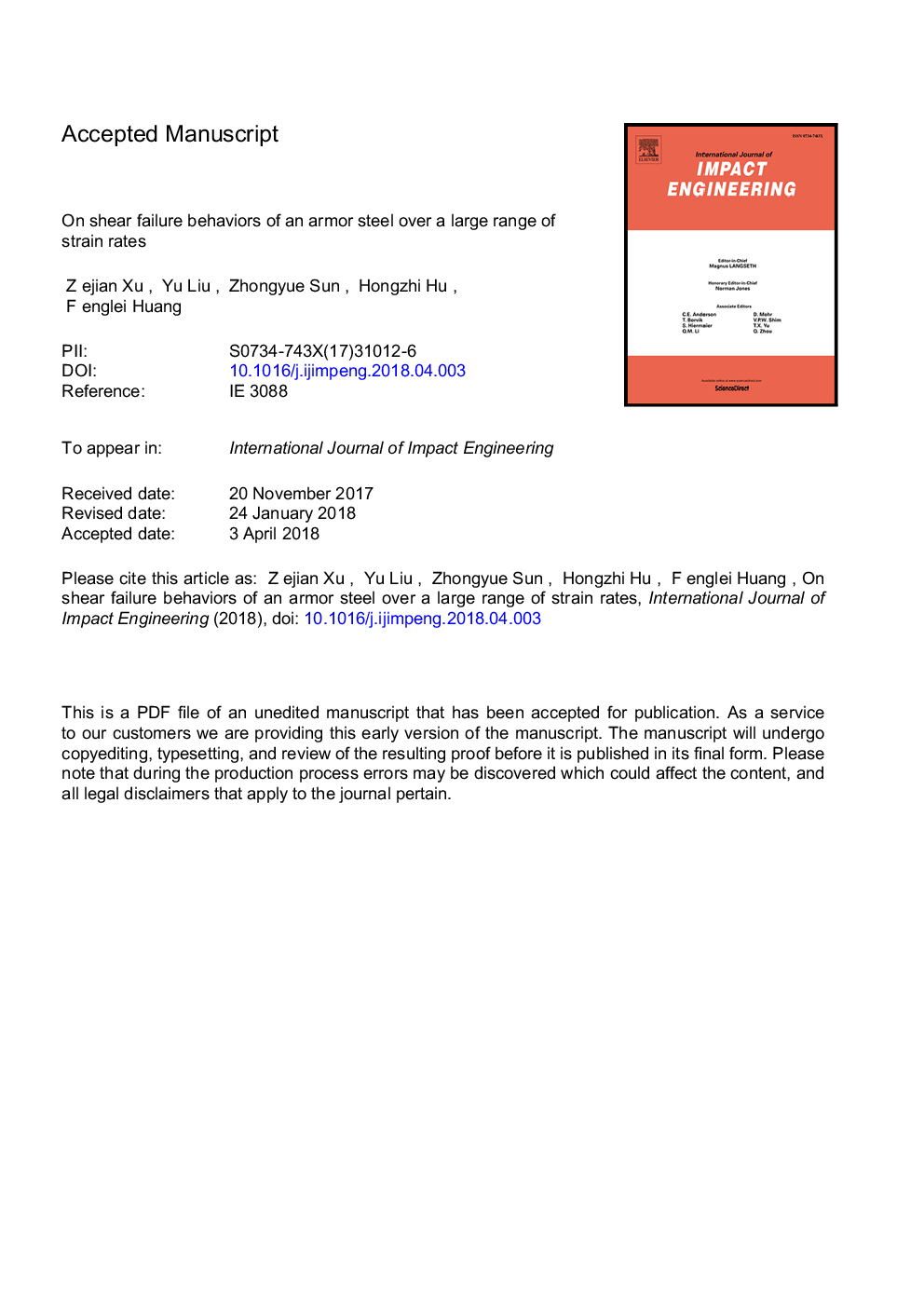| Article ID | Journal | Published Year | Pages | File Type |
|---|---|---|---|---|
| 7172916 | International Journal of Impact Engineering | 2018 | 26 Pages |
Abstract
A newly-designed double shear specimen (Xu et al. A novel method in dynamic shear testing of bulk materials using the traditional SHPB technique, Int. J. Impact Eng. 101: 90-104) is used in this work to study shear failure behaviors of the 603 armor steel with shear strain rate ranging from 0.001 sâ1 to 45,000 sâ1. Shear stress-shear strain curves are obtained at each strain rate until fracture initiates in the shear zone. It's observed that the failure strains drop abruptly while the failure stresses increase only slightly with strain rates, which means that the material tends to fail more easily at higher strain rates. With the aid of numerical simulation, it's found that in the shear zone a shear dominated stress state is formed, and the values of stress triaxiality and Lode angle parameter are quite low. Fractographic examination shows that under simple shear condition, the failure process of the material is controlled by totally different micro-mechanisms. With the increase of strain rates, the failure characteristics transform clearly from elongated dimples to adiabatic shear bands, which provide a reasonable explanation to the mechanical responses of the material. The results show that the mechanical behaviors of materials should be tested over a wide range of strain rates, and at the same time the data consistency and comparability should be kept, to set up a foundation for engineering computation and to guide the safety design.
Related Topics
Physical Sciences and Engineering
Engineering
Mechanical Engineering
Authors
Zejian Xu, Yu Liu, Zhongyue Sun, Hongzhi Hu, Fenglei Huang,
